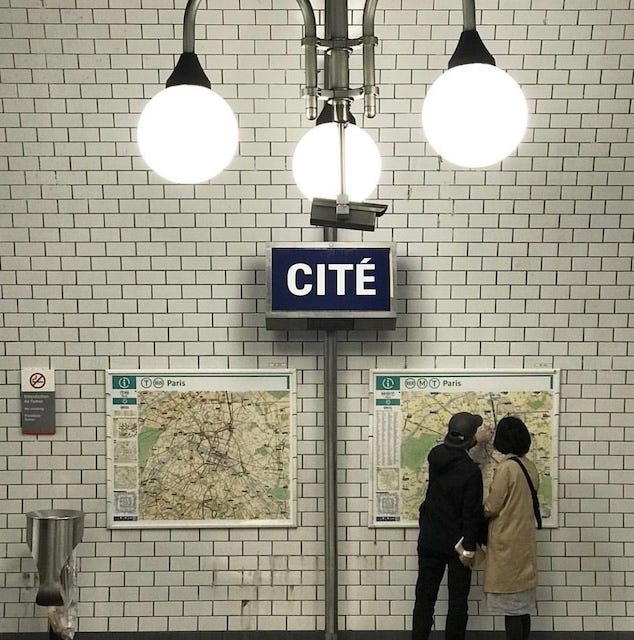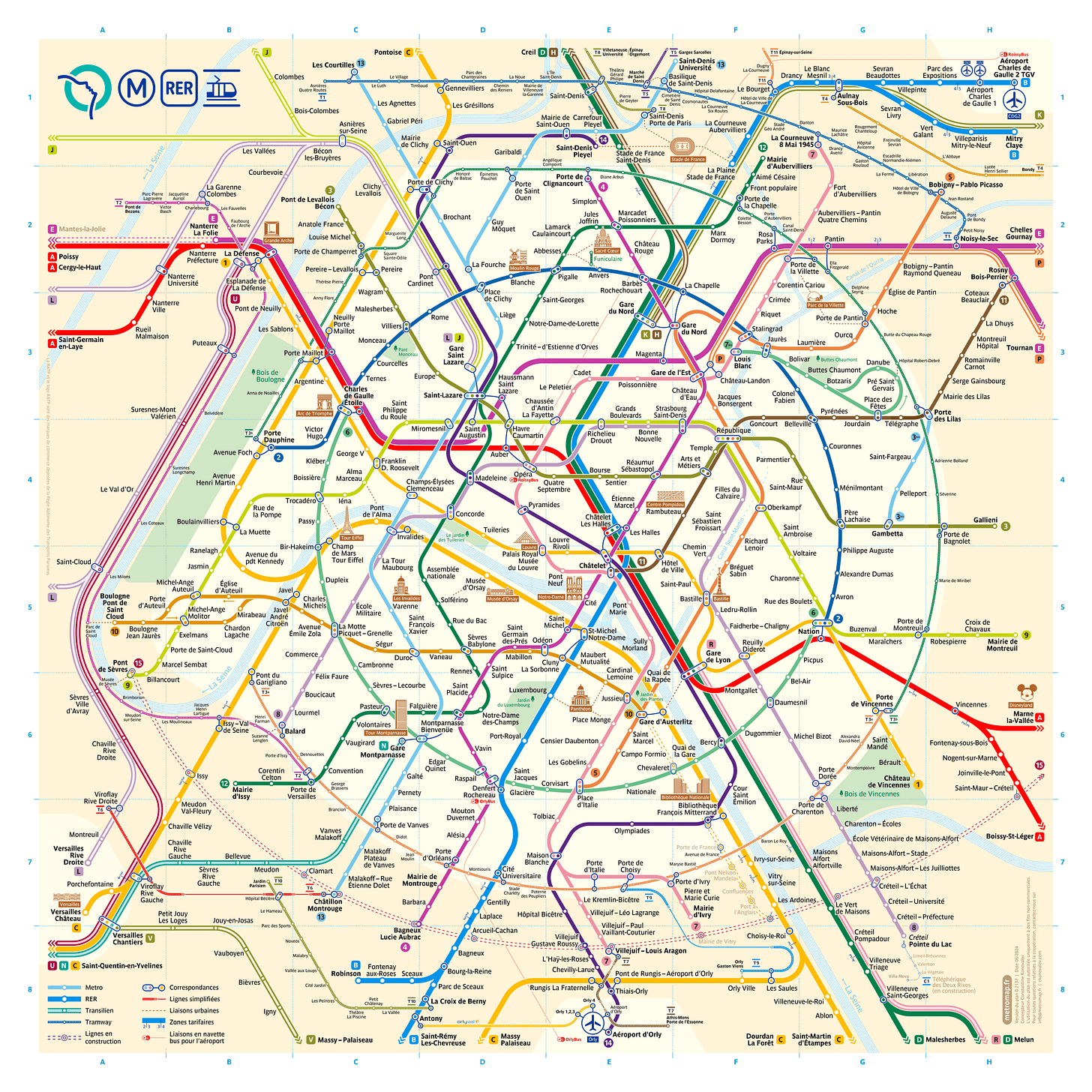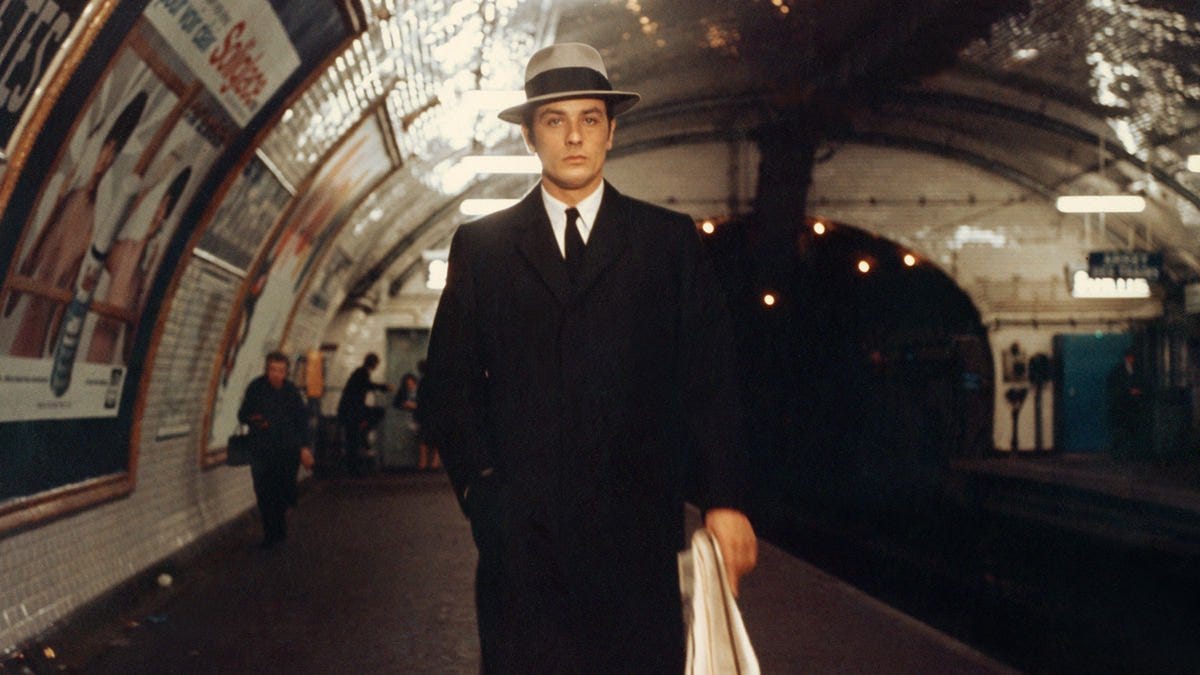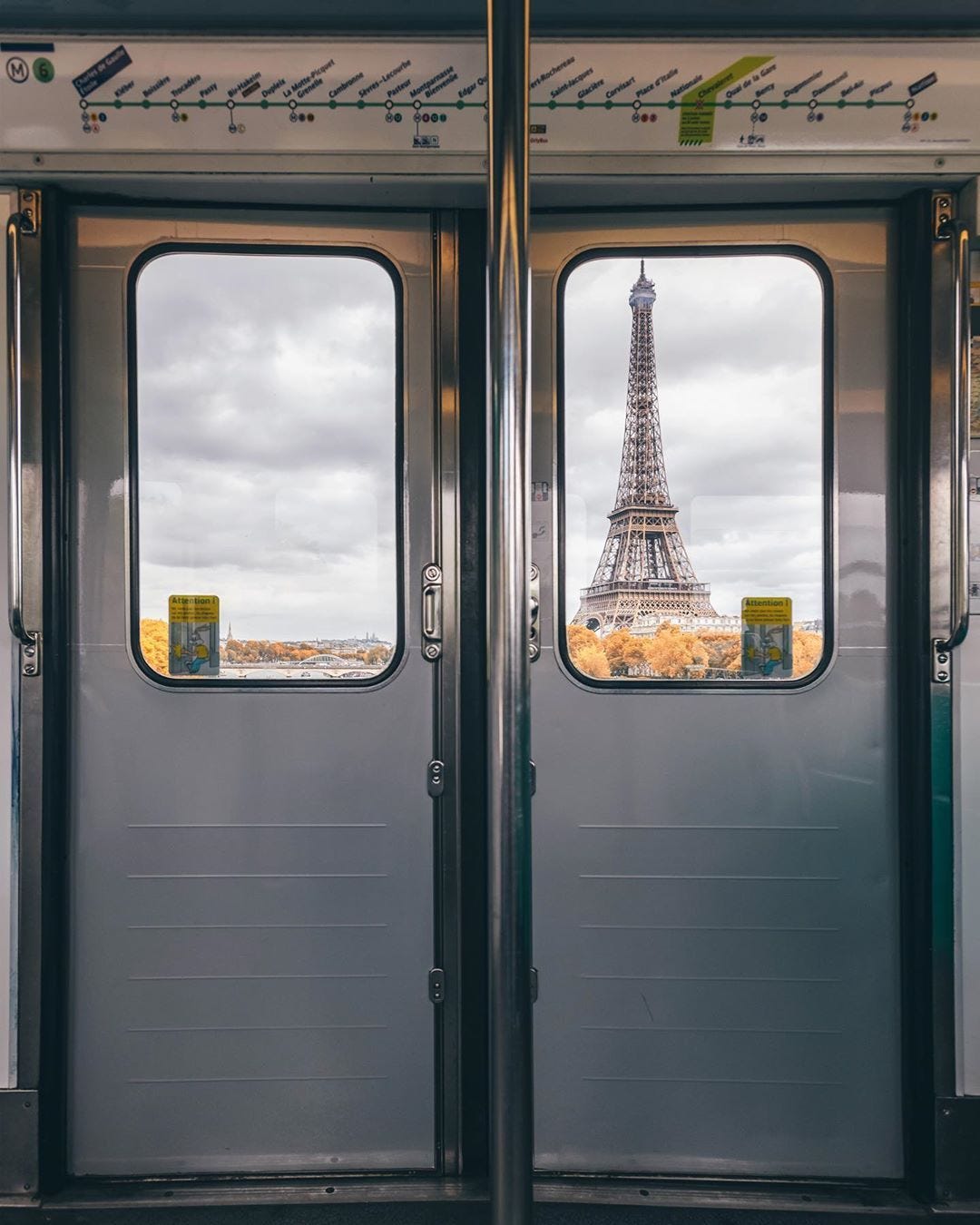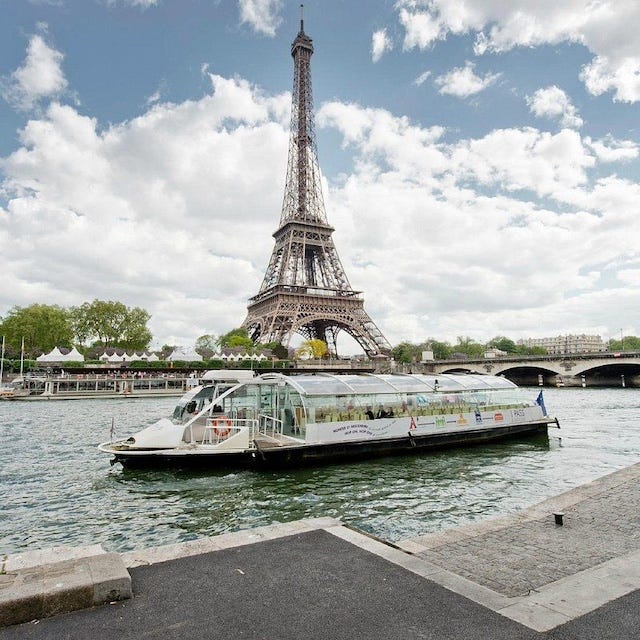ride the métro like a parisian🇫🇷
tips and tricks for the most romantic public transportation
Last week I shared a brief history of the Paris Métro, and today I’m giving you the External Toolkit with all my tips and tricks on how to use it like a local! If you’re like me, I always try to brief myself on the etiquette of a place I’m travelling to so that I can be respectful of its residents, not stand out as a tourist too much (lol), and avoid classic faux pas!
🗺️ Where Are You Going?
Thank goodness for Google Maps! Unlike some other countries (which I discovered while in South Korea this year), this app works great all over Europe! Simply enter in your destination and Google Maps is fairly reliable for telling you the best route to take, as well as notifying you about any delays. I like to screenshot my journey so that I follow it should wifi or data not work underground.
Parisians don’t say “northbound”/ “uptown” like you’ll hear in New York City, instead they tell you what the terminus (last) stop is, so when figuring out which direction you’re supposed to be going:
Figure out what station you’re starting from.
Find the station you’re supposed to go to.
See which terminus station your destination is getting closer to! Once you know the terminus station, voilà! You’re ready to find your platform.
Something myself and many tourists have had trouble with: buying your train ticket from the airport! Please note that you’ll be taking the RER from outside Zone 1 (the central Paris zone) so it will be more expensive than the regular Métro, but cheaper than an Uber/taxi. If you’re mobile, don’t have a lot of luggage, and want to save a buck, take the train as it’s super fast! The machines can be a little confusing, but if you know the name of the station you’re arriving at, you can enter it in and will be charged the right amount-avoiding getting stuck and possible fees! If you’re still having trouble with the machine, don’t be afraid to ask one of the employees with the name of the station you want to get off at. It helps to have a photo of it on your phone!
Try downloading and taking a look at this map of the Métro and follow a line from its start to finish! Sometimes I download the transit map of a city on my phone when I want to experience travelling the “old fashioned” way, or don’t want to use data:
You can also look at the Paris Métro website, download the Bonjour RATP app, or Citymapper for additional information!
✨ Hot tip: Sometimes it’s faster to walk above ground for Métro transfers, or to get from one place to the next (especially during rush hour)! Again, Google Maps is my friend for this one. Also make note of Paris rush hour (about 7am–9:30am, then 4pm–7pm) to help you with more tips below!
🎟️ Tickets and Passes
The next step of getting on the Métro after figuring out where you’re going is buying the ticket! You have two options: a paper ticket (which are slowing becoming phased out, so get this for your scrapbook while you can!) or a reusable card called “Navigo”.
If you’re staying in Paris shorter than a week and plan on walking lots, I would personally just buy individual paper tickets for whenever you really need to get from A to B!
However, if you’re staying longer than a week, want to jump around neighbourhoods (arrondissements) lots, or physically can’t/don’t want to walk very much, buy the Navigo Easy Card (you can load it by value or amount of tickets) or Navigo Découverte pass (unlimited rides in the Paris zone - Zone 1 - for a flat fee). Here is the Navigo website for more information about current prices etc.: https://www.ratp.fr/en/titres-et-tarifs/weekly-navigo-travel-passes or https://www.iledefrance-mobilites.fr/en/titres-et-tarifs/supports/passe-navigo
You can also load tickets onto your Navigo card for day trips to Giverny, Versailles, Disneyland Paris, or my favourite antique market!
One thing that I hope they’ll change, is that they’re tied to the calendar, not the day of purchase, so if you’re looking to buy a monthly pass don’t buy it on the 30th, buy it on the 1st! Same goes for the weekly pass: it starts on the Monday.
✨Hot tips: Keep your ticket or card with you until you’ve exited as there are sometimes surprise checks! AND the Paris zone is different from the RER which you would take from the airport, for example. Make sure you are purchasing the correct zone or you may not be able to exit! I’ve made this mistake countless times, and while I was lucky and had really sweet locals wave me over to secretly come enter through the turnstiles with them, A) you can’t rely on luck, and B) this is risky and you could get fined!
🇫🇷 French Sign Vocabulary Toolkit
Sortie - Exit
Correspondance - Transfer
Compostez votre billet - Validate your ticket
Direction - The terminus (last) stop
Quai - Platform
Rame - Train car
Plan du Métro - Map
Sans contact - Tap-to-pay
Noctilien - Night bus
🚇 “Do”s and “Don’t”s!
DO…
💡 Stand on the right of the escalators, walk/pass on the left
💡 Safely guard your belongings (although I’ve only seen it online and haven’t experienced it myself, pickpockets apparently love targeting people on the Métro, often in groups)
💡 Take the elevator at Abbesses station unless you want a workout, as it’s one of the deepest stations in Paris with 144 stairs!
💡 Head to the first or last car of the train if you want a better chance for less crowds.
💡 Take note of the normal running times: 5:30am-about 1:15am on weekdays and 5:30am-about 2:15am on Fridays and Saturdays.
💡 Prepare for there to be no AC. While they’re getting better and more lines are getting attention with this, the French are notorious for disliking AC, and in the Métro in the hot summer days, you may be surrounded by sweaty and smelly people! Best to avoid rush hour once again, and keep your expectations low.
💡 Notice the gorgeous stations and journey! For example, read my post last week for themed stations, and Line #6 between the Passy and Bir Hakeim stops will make you feel like you’re in a movie as you glide past the Eiffel Tower✨
DON’T…
🙅🏼♀️ Stand by the doors if it’s busy, move inside the car to make room.
🙅🏼♀️ Go into the train before others get off.
🙅🏼♀️ Sit in the fold-down seats at rush hour- they are meant to give more room for people standing!
🙅🏼♀️ Assume there will be an elevator or escalator. A lot of the older lines aren’t accessibility-friendly and have lots of steps! If you’re travelling with children, a stroller, the elderly, or not easily mobile, I would highly recommend taking the bus or getting an Uber/taxi instead to avoid this.
🙅🏼♀️ Forget that the French love to go on strike! This applies to the Métro as well, so keep yourself updated to avoid delays.
🙅🏼♀️ Be afraid to take the bus! Google Maps will again help you with this, and it’s a cheaper and cooler “tour bus”, because you can spy on locals and feel like you’re one of them!
🙅🏼♀️ Worry if you miss the last Métro of the night, as night buses (Noctilien) cover most routes, or Ubers and Taxis will likely be cheaper with less traffic.
📝 Final Notes
Congrats on reading thus far! You’re closer to riding the Métro like a true Parisian! Once you get practice, you’ll soon navigate which train car to get on for the perfect Métro exit like a local too. For example, if you choose Abbesses over Anvers, you’ll exit into a beautiful little square in Montmartre✨ rather than a busy street!
While not technically the Métro, another trick I actually have yet to use, is taking the Batobus on the Seine. Just like the Staten Island ferry gives you the Statue of Liberty views at a fraction of the price of a tour boat, the Batobus is great during the summer months for a leisurely self-guided tour at a reasonable price! View their website for more info: https://www.batobus.com/en. Let me know in the comments if you’ve already tried it and what you think!
Next week we’ll explore why the Métro is good for your brain through the neuroscience of wellness🌿! Stay tuned! Merci beaucoup et à la semaine prochaine 💋!


